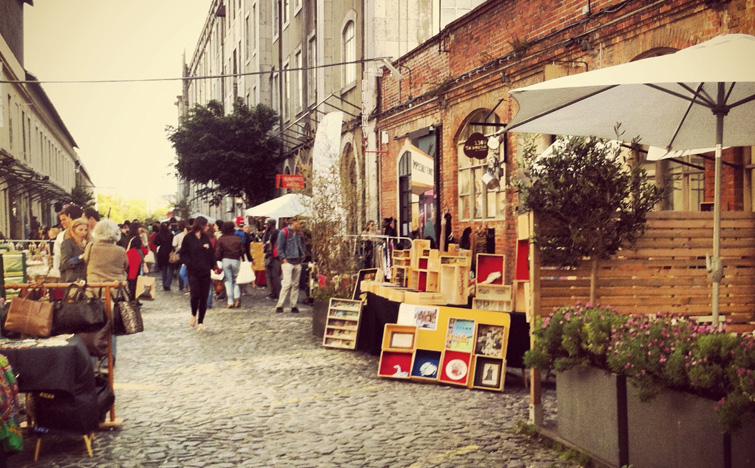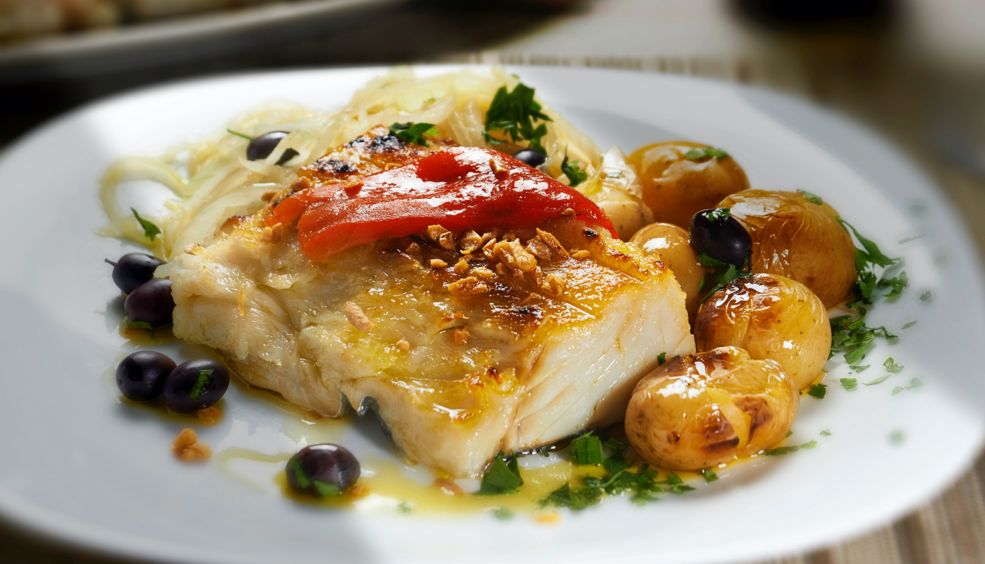LX Factory: The new Lisbon
By Tensi Sánchez from actitudesmgz.com
Lisbon is changing. In it´s streets you can smell art and culture wherever you go. The new generations want to show to the rest of the world the greatness of the capital and the economical situation won´t be able to make the ilusion flater. LX Factory is the best example of how in times of crisis the best and most creative ideas can appear.
Alcantara was an industrial area in the XIX century located under the 25of April bridge, but nowadays this zone represents the hotest cultural area in the city. The 23.000 square meters space was meant to be demolished thanks to the Alcantara XXI project to turn it into a multipurpose area. But recession delayed the regeneration and Mainside agency took advantage of the decadent and industrial atmosphere, to rent corner for 12 euro the square meter for young artists and entrepeneurs.
The result? A huge space in which almost 80 companies related with culture, literature, art, fashion and design gather, to offer the most underground and Berlin style experience. The prizes are affordable and anybody can enjoy the hipster atmosphere.
The must places are the Cantina: an old workers dining room which incluyes food for vegetarians and or the breathtaking three floor Ler Devagar bookstore. In the night going to Lollipop disco it is a good option as long as you are included in the guests list. But there is always a chance to go to La Sala de las Columnas where different kinas of deejays will play music for a memorable night.
The Open day is an event which is held twice a year and organizates different workshops and expositions.
A different and magical place, that speaks for itself about a new Lisbon that is rosing form it´s ashes. A city that albergates the most contemporanean culture without leaving appart tradition.
By Tensi Sánchez from actitudesmgz.com
Photos by Ricardo Junqueira
Makes you want to go, right? Do it! Check out our prices here!
more infoGASTRONOMY IN PORTUGAL: A USEFUL LITTLE GUIDE ON THE SECRETS OF COD
Cod is a major institution in Portugal. Across the length and breadth of the country, you'll find it on every menu every day. Which is why we've prepared a useful little guide to help you learn more about this fish, including its history as well as the cultural and gastronomic aspects. And make no mistake… you'll be licking your fingers!
more infoMinsk, the great unknown.
Imagine, for example that we have a few free days to escape to any of our destinations Vueling. So why not visit Minsk?
The capital of Belarus is maybe one of the most unknown destinations that we could choose. However, it is a mesmerizing town, full of culture that will surprise almost everyone, quite sure!
Minsk is the cultural epicenter of the country. Its first theaters and libraries were built in the mid nineteenth century and today we find eleven theaters, museums sixteen, nine libraries - among which is found the National Library of Belarus- and a wide range of concert halls.
The best way to get around the city is using its modern metro, which was built in the 80s and that consists of two lines that connect the center with the periphery of Minsk. Or using a still current transport as trolleybus or tram to quietly contemplate the city and feel like the protagonist of a film set in the Cold War. Remember also that Minsk is considered one of the cleanest and safest cities in Europe.
For dining, Minsk has a strong influence both Ukrainian and Russian. Undoubtedly, the typical dish of the city are mushrooms combined with many sauces as you can imagine. Plus Borsch, beetroot soup served with a sour cream called smetana with pieces of meat. Special mention to typical local fish like herring, or the more expensive and luxurious product from sea world: caviar. On the other hand, the Vodka, the Bela-Cola and Kefir are the most common drinks.
Let's review some of the most emblematic places of the city, that you should visit if you are in the Belarusian capital city:
1.-Victory Square
Minsk's main square. Located in the city center and dedicated to the Great Patriotic War. It is the place where the most important events in the capital are celebrated, as well as parades and concerts. In the center there is an 40 meters high obelisk . It is prism-shaped and on the bottom there is an eternal flame in honor of the soldiers of the Soviet Army and the partisans of Belarus.
2.-National Museum of History and Culture
Issuing the largest collection of material and spiritual culture of the Belarusian people, from 40,000 BC to this day. There we can see from ancient manuscripts, archaeological finds, to costumes and heraldic collections.
3.-Cathedral of the Holy Spirit
Built between 1633 and 1642, it is one of the few historic buildings of the city. Currently works as an art gallery and includes a superb collection of Orthodox icons such as Mother of God, discovered in the sixteenth, that work is thought by San Lucas.
4.-Island of Tears
Across the river Svisloch we find a small island where stands a monument dedicated to Belarusians soldiers killed in Afghanistan. It consists of four altars with the names of the 771 soldiers engraved on them. According to tradition, the newlyweds of Minsk should visit the monument.
5.-National Library of Minsk
It is certainly one of the most modern architectural projects of the city. A building of 72 feet tall and 22 floors diamond-shaped, modernist and futurist. At night, becomes one of the most emblematic of the city thanks to its dramatic lighting.
6.-Museum of Great Patriotic War
Second World War Museum was the first museum to open during the course of the war commemorating the German-Soviet battle after the end of the Nazi occupation. Inside we can see from a model of concentration camp until a section devoted to the Belarusian resistance. 7.- Park Chelyuskinites The Amusement Park of Minsk. Its appeal lies in the essential conservation thereof, dated 1932 In addition to all kinds of attractions, you can also enjoy the beautiful botanical garden next to it.
Imagen de Monk - Ihar Mahaniok
Por Jordi Herrero
A place well worth discovering! Check out our flights here.
more infoThe Velvet Underground Reigns in Paris
Who would have thought that, when they made their debut on stage at the Café Bizarre in New York, the young Lou Reed and John Cale would end up being the stars of an exhibition paying tribute to their band in Paris? That was back in 1965 when, having first called themselves The Warlocks and then The Falling Spikes, they had finally settled on a name that would identify and enshrine them for posterity. Incidentally, The Velvet Underground was the title of a book on sado-masochism written by Michael Leigh which had fallen into their hands by sheer chance. Nothing unusual, however, considering that drugs, prostitution, transvestism and homosexuality were rife in their New York haunts and would become the subject of many of their song lyrics, a fact which rattled more than one music producer.
Andy Warhol, a great one for moving in the New York underground and absorbing it into his parties and his works, particularly in the film pieces he shot with Paul Morrissey, was enthralled with the music of this upcoming band and added them to the prevailing fauna in The Factory. What’s more, he even took the bold step of taking over as manager of the group and in 1967 released his first production, The Velvet Underground & Nico, for which he did the cover design. Indeed, I am referring to the famous cover with the banana sticker, a veritable icon in the art world. But, the album’s value lies not only in its wrapping. Its content includes some genuine musical pearls like Sunday Morning, I’m Waiting for the Man, Venus in Furs and Heroin.One of the upshots of their collaboration with the pop artist par excellence were the videos he recorded with them, which ranged from ghoulish to arty, in which he enveloped the band in light and colour.
While the album was not a super-hit – only some 30,000 copies were sold – the band decided to break with the core of Andy Warhol and The Factory to pursue their career as musicians. The Velvet Underground remained active until 1973, when differences between the leaders were responsible for precipitating a break-up – John Cale having had a more academic music training, while Lou Reed had followed a more rebellious line. They actually started moving in and out of the band, until they eventually decided to break up altogether.
Despite their short career and meagre success, at least as far as album sales is concerned, The Velvet Underground was one of the most influential bands of New York. Heirs to the beat generation legacy, they played a crucial role in New York’s counter-culture, far removed from the psychedelic hippie culture of the seventies that reigned in San Francisco, the other major hub of creativity in the United States. Among those who inherited their destructured sound and coarse lyrics were Ramones, The Voidoids, Dead Boys, The Heartbreakers, Siouxsie and the Banshees, Joy Division, Bauhaus, The Contortions, Bush Tetras, Teenage Jesus and The Jerks, DNA, Sonic Youth, Spacemen 3 and Nirvana.
The Philharmonie de Paris is hosting a tribute to this band in the form of an exhibition entitled, The Velvet Underground. New York Extravaganza, which runs until 12 August. Audiovisual material has been carefully curated, with six films being purpose produced for the occasion, also featuring television file pictures, photos and portraits of the band members, objects from private collections and works by contemporary and later artists who were seduced by the charms of the band. This whole ensemble is designed to recount the story of the group and its lasting legacy. But, there is more – the exhibition will be supported by a parallel set of activities, including conferences, screenings and concerts.
Go back down memory lane and relive one of the outstanding rock bands of New York’s counter-culture by taking a getaway to Paris. Check out your Vueling here.
Text by Los Viajes de ISABELYLUIS
more info




